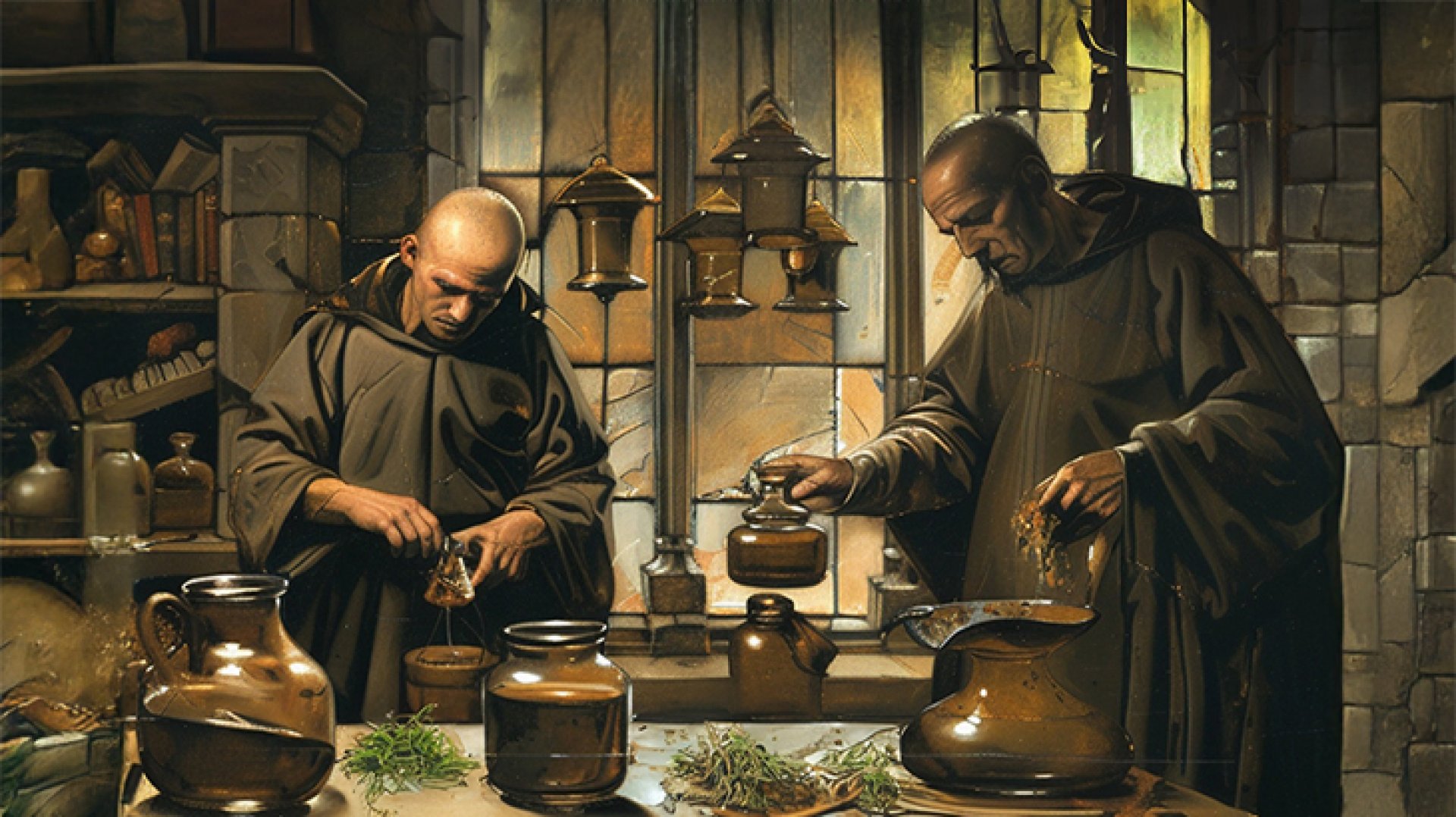Bénédictine

An amber liquid infused with the aromatic essence of various herbs, this is the distinctive characteristic of Bénédictine, an exquisite liqueur from France, boasting a history of over 500 years. Today, Rimping Supermarket takes you on a deep dive into the story of this legendary bottled liqueur.
Origins at Fécamp Abbey: A Liqueur for Wellness (1510 AD)
The story of Bénédictine began at the Fécamp Abbey in Normandy, France. It is said that a monk named Dom Bernardo Vincelli of the Benedictine order created this liqueur in 1510 AD. He used rare herbs, spices, and roots found along the Norman coast in its production. It was initially used as a medicine and a digestive drink.
Loss and Rediscovery: Alexandre Le Grand (1789 - 1863 AD)
For centuries, Bénédictine remained popular at Fécamp Abbey until the French Revolution (1789-1792), when the abbey was destroyed, and the monks had to flee for their lives. Realizing the recipe might be lost, a monk entrusted Dom Bernardo Vincelli's original Benedictine recipe, written in a tome, to Prosper Couillard, the abbey's steward.
However, this tome was hidden and forgotten for nearly a century until 1863, when Alexandre Le Grand, Prosper Couillard's grandson and a collector of religious art, discovered the lost manuscript. He then refined the recipe, adapting the original to create the herbal liqueur known as Bénédictine (the original recipe's taste was more suited for medicine). Today, the original recipe is kept in a vault in Geneva.
Brand Creation and Marketing Strategy (1864 AD)
Alexandre Le Grand commissioned special glass bottles, resembling ancient ones found in the abbey, from the Abbot of the Benedictine Order in Rome. He also sought permission to use the name and emblem of the Bénédictine Abbey in Fécamp to honor Dom Bernardo Vincelli. He then named this liqueur Bénédictine and sealed its bottles with a red wax stamp bearing the Bénédictine emblem.
In 1864, Alexandre Le Grand registered the trademark for Bénédictine, incorporating the Benedictine monks' motto through the abbreviation D.O.M., which stands for Dom Optimo Maximo, meaning "To God, Most Good, Most Great." This is why we see the initials D.O.M. prominently displayed on Bénédictine bottles.
As Alexandre Le Grand's family already had a wine trading business, they distributed Bénédictine throughout Europe and America, quickly spreading its reputation. He also employed modern marketing strategies for his brand, placing eye-catching advertisements at busy locations like ship and train embarkation points, leading to significant brand success.
Rebuilt Distillery and the Creation of B&B (1892 - 1937 AD)
Later, Alexandre Le Grand built offices and a distillery on the site of the destroyed old abbey, decorating the architecture to resemble the original. However, an unexpected event occurred when two local men he hired, who were alcoholics, became angry about being dismissed. On the night of January 11, 1892, these two men set fire to the office and distillery, causing complete damage, and all company documents were burned as well (they were later caught and imprisoned).
Despite the unforeseen incident, the Le Grand family persevered. They decided to rebuild the Palais Bénédictine, making it larger and more luxurious than before. It was designed with an elegant fusion of Baroque and Gothic styles by the most renowned architect of that era. Besides the grand distillery hall, various rooms, including the prayer hall, were adorned with carvings and artifacts from the monks. This building was completed in 1900 AD, and it remains the location of the Bénédictine offices today.
Bénédictine's popularity led to a new creation during Prohibition in the United States in 1930. A bartender at Club 21 in Manhattan had the idea to mix Bénédictine, Cognac brandy, and honey, resulting in a new, sweeter Bénédictine.
Later, in 1937 AD, Alexandre Le Grand's company decided to commercially produce ready-to-drink Bénédictine B&B, where the first B stands for Benedictine D.O.M., and the second B for Brandy, using 60% Bénédictine and 40% exquisite French brandy.


